Kathryn Talbot, K-State Libraries’ preservation coordinator, was at home when she received the call about the Hale Library fire on May 22.
“This person kept saying, ‘There was a fire, blah, blah,’” Talbot said. “I literally almost went, ‘I think you have the wrong number,’ before it dawned on me: This is Michelle from work.”
After that call from Michelle Turvey-Welch, the Libraries’ head of metadata and preservation, Talbot came back to campus feeling relatively calm.
“Driving up you didn’t see smoke, so I thought, ‘It can’t be that bad.’”
But when the firefighters were still working four hours later, Talbot knew that she needed to ask Turvey-Welch for permission to call companies that manage large-scale emergency recovery and restoration.
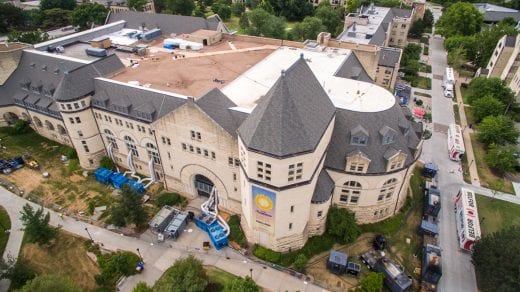
“We were preregistered with two companies that specialize in cleaning up after emergencies like hurricanes and tornadoes,” Talbot said. “So I called to say, ‘I think we might need your assistance.’ After four hours I knew it really was that bad.”
As K-State Libraries’ disaster team lead, it’s Talbot’s job to prepare the organization’s employees for the unexpected and to know whom to call in an emergency. By preregistering with disaster recovery companies, Talbot insured that K-State Libraries would be a priority client in case of a large-scale crisis. For example, in the instance of a tornado that affects multiple organizations, the disaster recovery company helps preregistered clients first.
That was only one element of the team’s preparation, though. Every office was supplied with one of the team’s red “disaster plan” binders, and they stocked strategic points throughout the building with emergency bins and supplies.
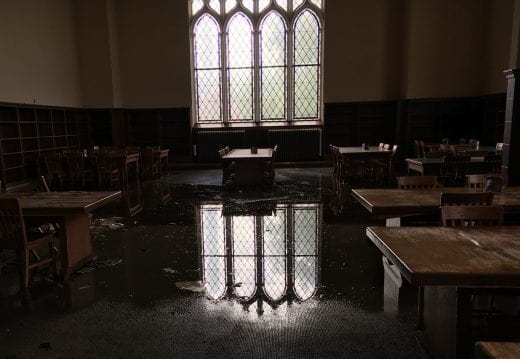
“The disaster plan is any library’s bible for how to care for the collection during a time of crisis,” Lori Goetsch, Dean of Libraries, said. “I’m confident that the damage in Hale Library would have been so much more extreme if it weren’t for Kathryn, Michelle, and a really excellent disaster plan.”
Once Talbot had made contact with BELFOR Property Restoration, she also called the American Institute for Conservation (AIC), which has a round-the-clock response line.
“I wanted their help in thinking through the situation and knowing which questions to ask the next day,” Talbot said.
Seeing the aftermath
In the following hours, as the extent of the damage became apparent, Talbot had plenty of questions, but answers were in short supply. She described her experience as she walked into Hale Library for the first time post-fire on Friday, May 25.
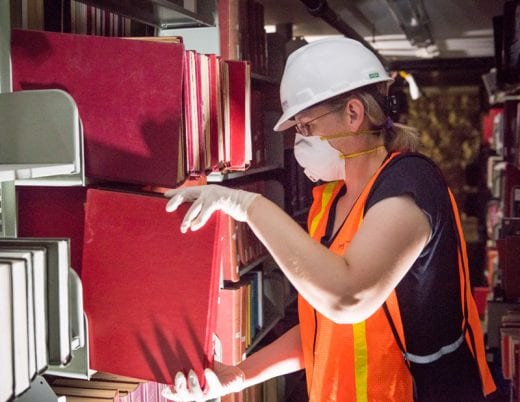
“It was really super dark, and I couldn’t believe at the time they had you put on boots,” she said. “I was like, ‘Why am I putting on galoshes?’ Then, as you walked in the back door, you instantly step into water. It’s like, ‘Why is there water in the mail room? That’s kind of weird.’ … And it was dark and intensely smoky. I figured [water and smoke would be] in the Great Room, but not everywhere.”
“We went up all five floors and four of them had water. I knew most of the collection would have to be moved. There was no way that our staff could do that on our own. There was no electricity and … we had tiny LED lights. It was way creepy.”
Talbot went through the building with Belfor staff members who specialize in handling collections and documents after an emergency. They helped prioritize which areas of Hale Library would be addressed first: Room 117 on Hale Library’s first floor suffered the most water damage and the books had to be packed out right away.
By this point, it was Memorial Day weekend, and it became increasingly difficult to contact vendors and arrange supplies. In order to have enough boxes on hand, Belfor’s team bought all of the boxes in stock at Home Depot, Menards, U-Haul and Lowe’s in Manhattan, Topeka and Salina. [Read more about how they recovered wet books.]
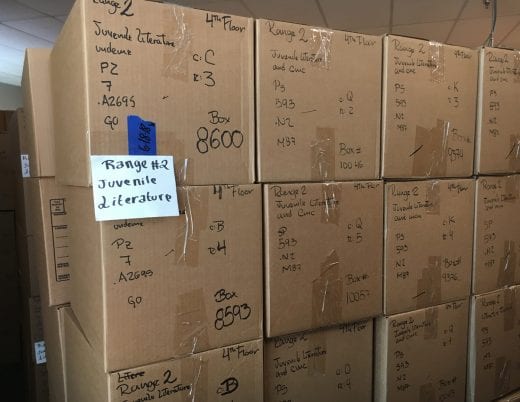
Today, a little more than eight weeks post-fire, Talbot cites Turvey-Welch’s constant support and non-stop work ethic for helping her get past each new unexpected challenge. She also praises the Belfor crew for helping her wrap her head around the massive scale of the project
“They’ve been through this before,” she said. “I’m like, ‘What am I not thinking of? … What do you need in order to do what you need to do?’ My dealings with their team have been highly collaborative.”
Past experience
When the Libraries aren’t in crisis, Talbot’s job looks much different. Typically, her main job duties include managing digital preservation and supervising all staff that handle aspects of physically moving books: shifting the collections from one part of the library to another, reshelving books returned by patrons, and storing and circulating books that are located offsite at the Library Annex. She also supervises the care of general circulating collections, including binding and preservation lab activities.
These days, Talbot has a desk in Unger Tower, but she doesn’t spend much time there.
“Every morning I visit Hale at about 7:40 and I do my rounds with my environmental control, I take pictures or I go, ‘Huh. I wonder why that’s like that,’” Talbot said. “I come out, upload the environmental data and send that on, maybe do some troubleshooting. It just depends on the day. It’s not like the early panicky weeks where you’ve got to react right away with some decision. It’s more like, ‘Okay, let’s think this through, because we’ve got 24 minutes to live in the situation.’”
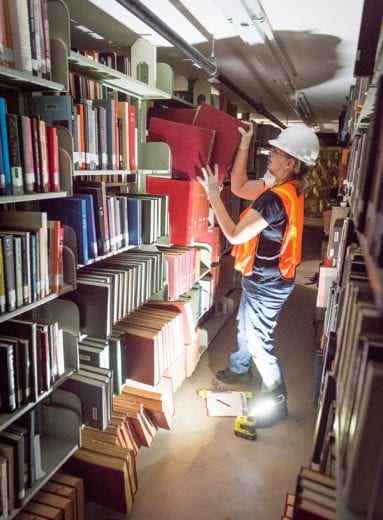
“I would say about a couple weeks ago I stopped waking up in the middle of the night, so I’m either letting it go or I’m just dealing with it better. I think we’re in a better place. It sounds like by the end of August we’ll have everything out of the building. Even if it’s not cleaned, it will be in a better environment than what it is now.”
“I think another anxiety will be when we’re ready to go back,” Talbot said. “The integration … really, I haven’t mentally wrapped my brain around that. There will be a lot of collection decisions that need to be made.”
And is she considering a career change after everything she’s been through in the last two months and the many challenges ahead for renovating Hale Library?
“No,” she said, laughing. “I’m not.”
Way to go Kathryn and Michelle and all Hale Staff! ~Sue Pray
Thanks for keeping us informed. Sounds like you’re recovery is going well.
James W. Mason
(former) Preservation Librarian, K-State Libraries